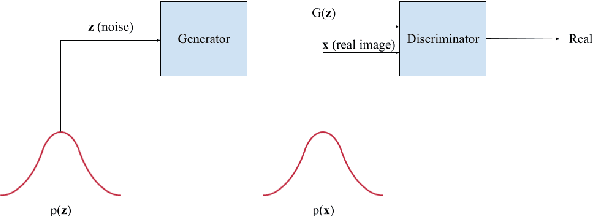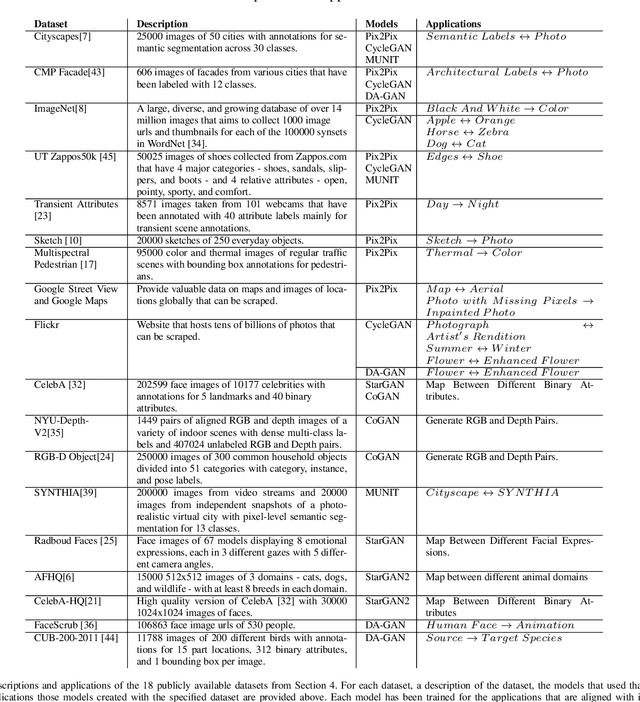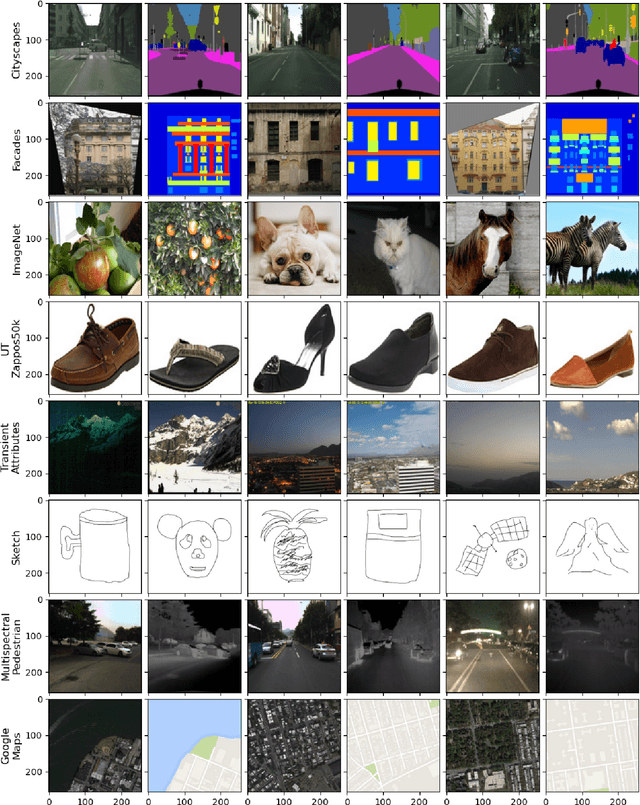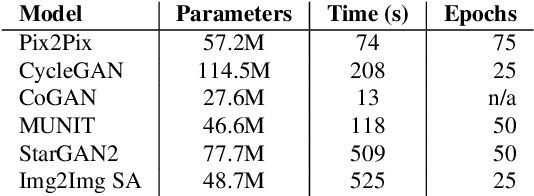Sagar Saxena
Improving Deep Generative Models on Many-To-One Image-to-Image Translation
Feb 22, 2024



Abstract:Deep generative models have been applied to multiple applications in image-to-image translation. Generative Adversarial Networks and Diffusion Models have presented impressive results, setting new state-of-the-art results on these tasks. Most methods have symmetric setups across the different domains in a dataset. These methods assume that all domains have either multiple modalities or only one modality. However, there are many datasets that have a many-to-one relationship between two domains. In this work, we first introduce a Colorized MNIST dataset and a Color-Recall score that can provide a simple benchmark for evaluating models on many-to-one translation. We then introduce a new asymmetric framework to improve existing deep generative models on many-to-one image-to-image translation. We apply this framework to StarGAN V2 and show that in both unsupervised and semi-supervised settings, the performance of this new model improves on many-to-one image-to-image translation.
Comparison and Analysis of Image-to-Image Generative Adversarial Networks: A Survey
Dec 23, 2021



Abstract:Generative Adversarial Networks (GANs) have recently introduced effective methods of performing Image-to-Image translations. These models can be applied and generalized to a variety of domains in Image-to-Image translation without changing any parameters. In this paper, we survey and analyze eight Image-to-Image Generative Adversarial Networks: Pix2Px, CycleGAN, CoGAN, StarGAN, MUNIT, StarGAN2, DA-GAN, and Self Attention GAN. Each of these models presented state-of-the-art results and introduced new techniques to build Image-to-Image GANs. In addition to a survey of the models, we also survey the 18 datasets they were trained on and the 9 metrics they were evaluated on. Finally, we present results of a controlled experiment for 6 of these models on a common set of metrics and datasets. The results were mixed and showed that on certain datasets, tasks, and metrics some models outperformed others. The last section of this paper discusses those results and establishes areas of future research. As researchers continue to innovate new Image-to-Image GANs, it is important that they gain a good understanding of the existing methods, datasets, and metrics. This paper provides a comprehensive overview and discussion to help build this foundation.
 Add to Chrome
Add to Chrome Add to Firefox
Add to Firefox Add to Edge
Add to Edge